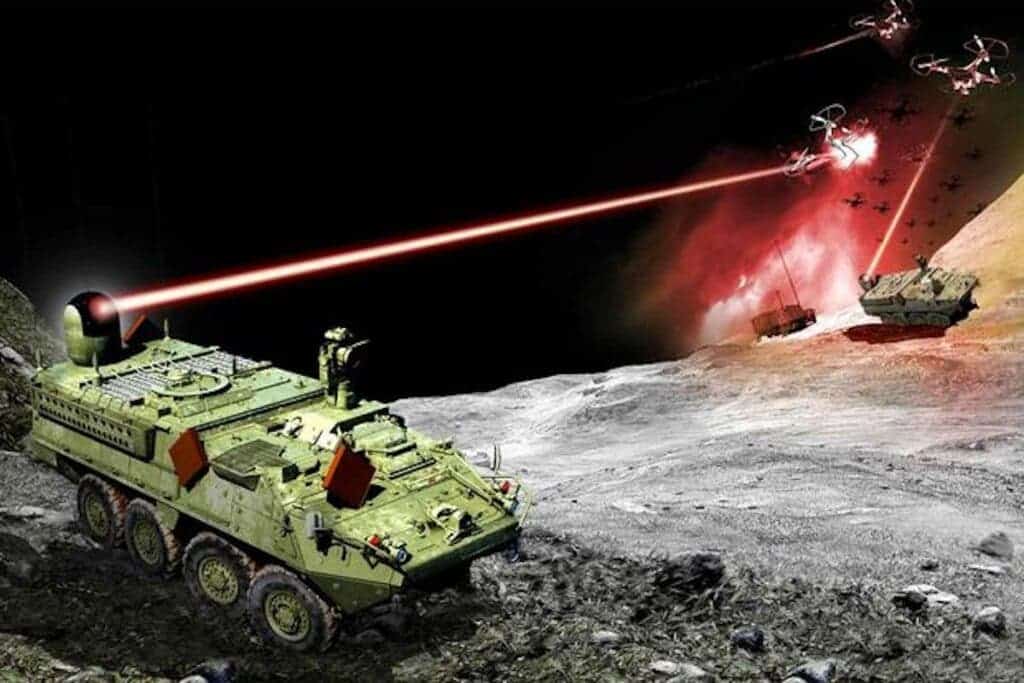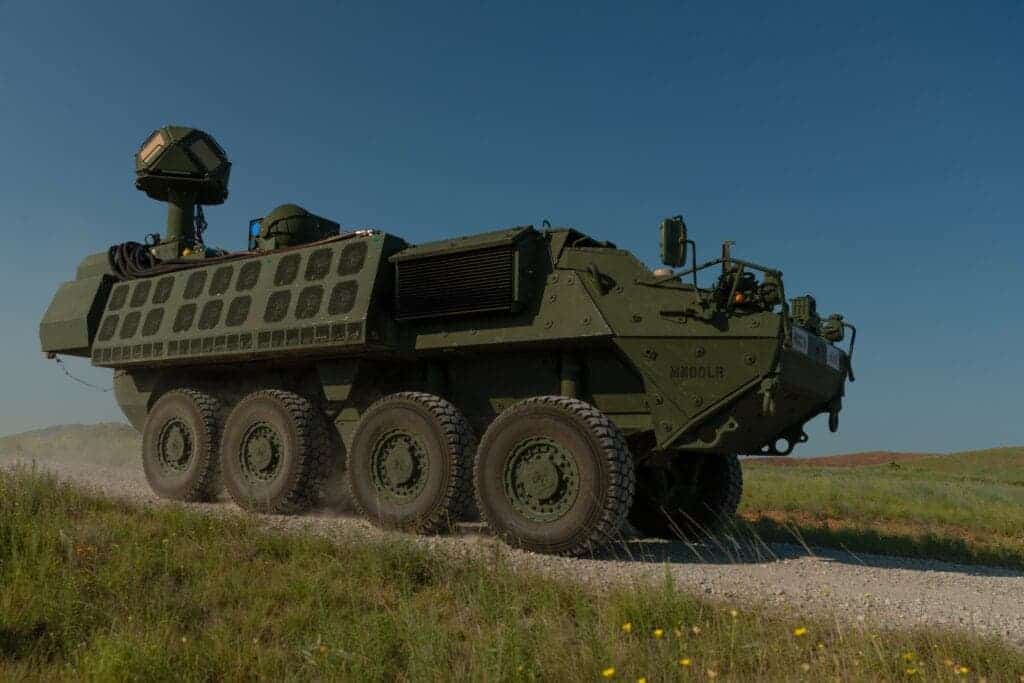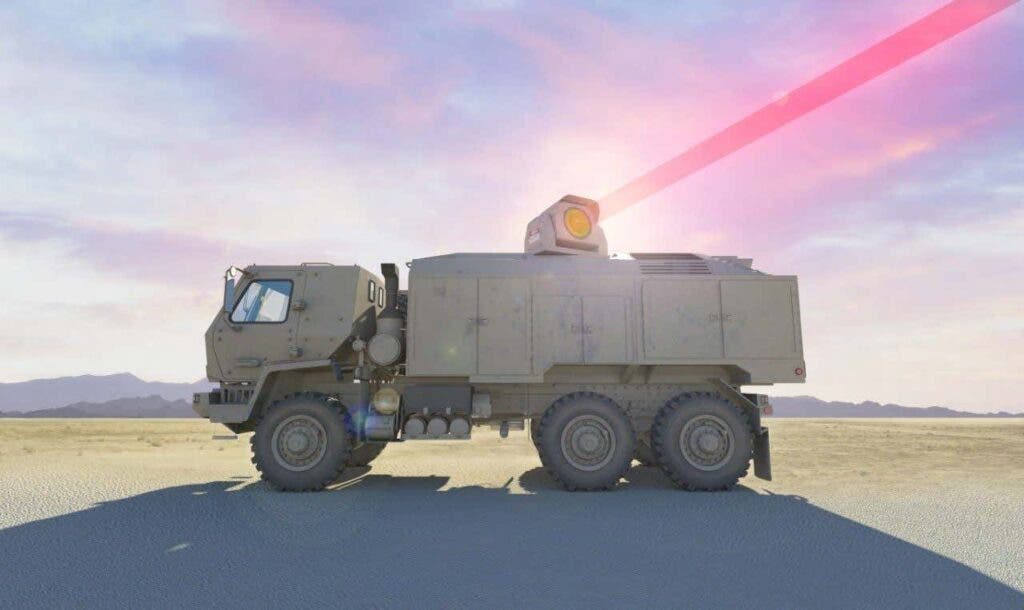
The U.S. Army is just a few small steps away from fielding its first combat-ready, high-powered laser weapon. Over the summer, such a weapon was mounted on a Stryker military vehicle and used in tests at Fort Sill, Oklahoma, in a “combat shoot-off” against a series of possible combat scenarios. The first platoon of four laser-mounted Strykers is expected to join the ranks of the army in early 2022.
“This is the first combat application of lasers for a maneuver element in the Army,” said Lieutenant General L. Neil Thurgood in a statement to the press.
“The technology we have today is ready. This is a gateway to the future,” said Thurgood, who is the director for hypersonics, directed energy, space and rapid acquisition.
During the shoot-off, defense contractors Northrop Grumman and Raytheon each brought a 50-kilowatt laser weapon to the field in order to demonstrate short-range air defense (SHORAD) against a series of simulated threats and combat scenarios. These included drones, rockets, artillery, and mortar targets.

Once reserved for science fiction, laser weapons are now a reality — one that will hit hard once these lasers are deployed on the battlefield.
Lasers were first invented in the 1960s, but it was only recently that researchers were able to design a high-power laser system that is small enough to be deployed in a tactical environment, without taking up the entire space of a truck or the airplane.
Designing a laser that is powerful enough to take out a mortar shell from a mile away is a huge engineering challenge. The way it is done is through a technique known as Spectral Beam Combination, whereby multiple outputs of beams are combined into a single high-power beam rather than using a single individual fiber laser.

Think of a prism that breaks up a white light beam into the colors of the rainbow. High-power lasers run this process in reverse, combining a bunch of beams that cover different spectrums of electromagnetic energy and outputting a single beam.
Laser weapon development was ramped up in the past decade as a response to the rising threats of armed drones and short-range mortars or rocket barrages. These unguided projectiles can’t be put out of action with sophisticated countermeasures, such as jamming or redirecting. The timeline of a rocket or mortar impact is also very short.
In this rapidly evolving threat landscape, laser weapons suddenly become appealing. For instance, the US Navy has an ongoing program called HELIOS (High Energy Laser and Integrated Optical-dazzler and Surveillance, which aims to install a laser weapon system on a DDG Arleigh Burke class destroyer. The Air Force is currently testing the High Energy Laser Weapon System 2, made by Raytheon Space and Airborne Systems, with the primary goal of disabling enemy drones.
The US Army isn’t sitting idle either. These recent 50 kW trials represent a bold and major step forward in the Army’s ambitions to deeply laser weapons on the battlefield of the future, where it currently faces a gap in short-range air defense.

“Offering lethality against unmanned aircraft systems (UAS) and rockets, artillery and mortars (RAM), laser weapons now increase Army air and missile defense capability while reducing total system lifecycle cost through reduced logistical demand,” the Army said in a statement.
According to Task & Purpose, the Army aims to assemble four battalions of laser-equipped Strykers by 2022. The Army is also working on a monstrously powerful 300 kW Indirect Fires Protection Capability – High Energy Laser (IFPC-HEL) truck-mounted laser by 2024. The IFPC-HEL truck, currently in development by Lockheed Martin, would be powerful enough to put cruise missiles out of action.


